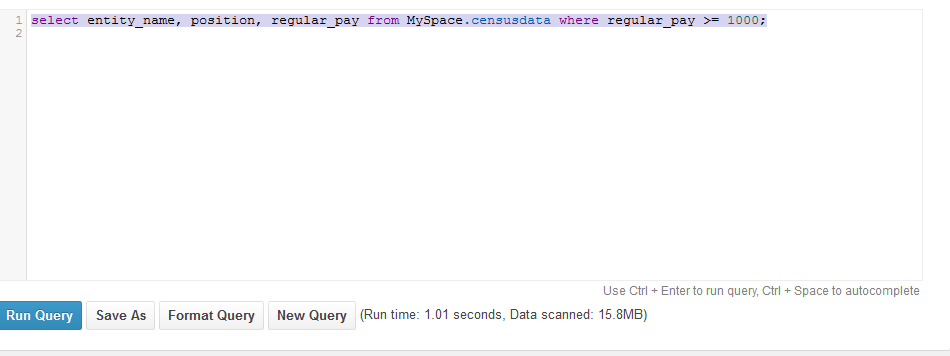

This saves a user the hassle of undertaking the pain of arranging the data on their own.Īn important thing to remember here is that Athena is only useful for Amazon S3 data. Unlike Redshift’s need to set up datasets manually, Athena does everything on its own. It starts instantly which translates into the fact that it saves time of the user. This can slow down their working, especially at the time of need. Sometimes a user may have to wait for hours to get Redshift started. It does have downsides too, the first to name is that it takes a long time to start the functioning. Though Redshift gives a user the edge in terms of performance, as it supports a wide range of datasets. While Redshift is incompatible with arrays and maps, Athena supports data in these forms. When considering the support for different types of data, both the services race neck and neck. It goes a step further to identify data from the individual libraries and divide them into chunks automatically to deliver the desired outcomes. While Redshift does not have the feature of partitioning a key on its own, Athena does the job effortlessly.

Fundamental FeaturesĪs far as AWS Athena vs Redshift spectrum is concerned, the former has an edge over the latter in terms of partitioning. In doing so, we will consider some of the fundamental characteristics concerning both the services. Redshift vs Athena: A Systematic Comparison Based on FeaturesĪfter getting the basic overview of both the services, lets run a comparison between the two to find out which one is a better choice. As far as its functioning is concerned, it analyzes all kinds of data that belong to Amazon S3.
#Athena vs redshift portable#
Due to the ability of this service to operate without a server, it is portable which makes it easy to carry. One of the key point about Athena is that this service is serverless. Also, this service only deals with data linked with Amazon S3. Amazon AthenaĪmazon Athena also handles query but unlike the other service, it is based on the fundamental SQL technology. The smart analysis mechanism of the engine not only analyzes the data but also provides the outcomes in quickly. Once they set up the datasets in the form of cluster servers, the Redshift takes care of the rest. The best part about this service is that it performs equally well for all datasets.Ī user needs to set it up properly, though. It is a cloud-based data warehouse technology that is made to deliver a robust input-output performance in connection with the fast query. Amazon RedshiftĪmazon Redshift corresponds to Postgre SQL 8.0.2. Which one makes for a better option in Redshift vs Athena? We will weigh the pros and cons of both to find the answer to this question. Both have their share of positive and negatives. When one goes by this rule, two options come under the spotlight as the leading choices – Amazon Redshift and Amazon Athena. Before going ahead with the idea, a company needs to identify the best option by narrowing down the set of leading options.

It has been said that the use of big data resources also necessitates proper planning. It gives organizations a clear advantage to keep pace with the fast-changing dynamics in the competitive business market. Nowadays this trend is being followed by the majority of firms dealing with large chunks of data. Most companies ride on cloud-based data warehouse technologies to stay competitive.


 0 kommentar(er)
0 kommentar(er)
